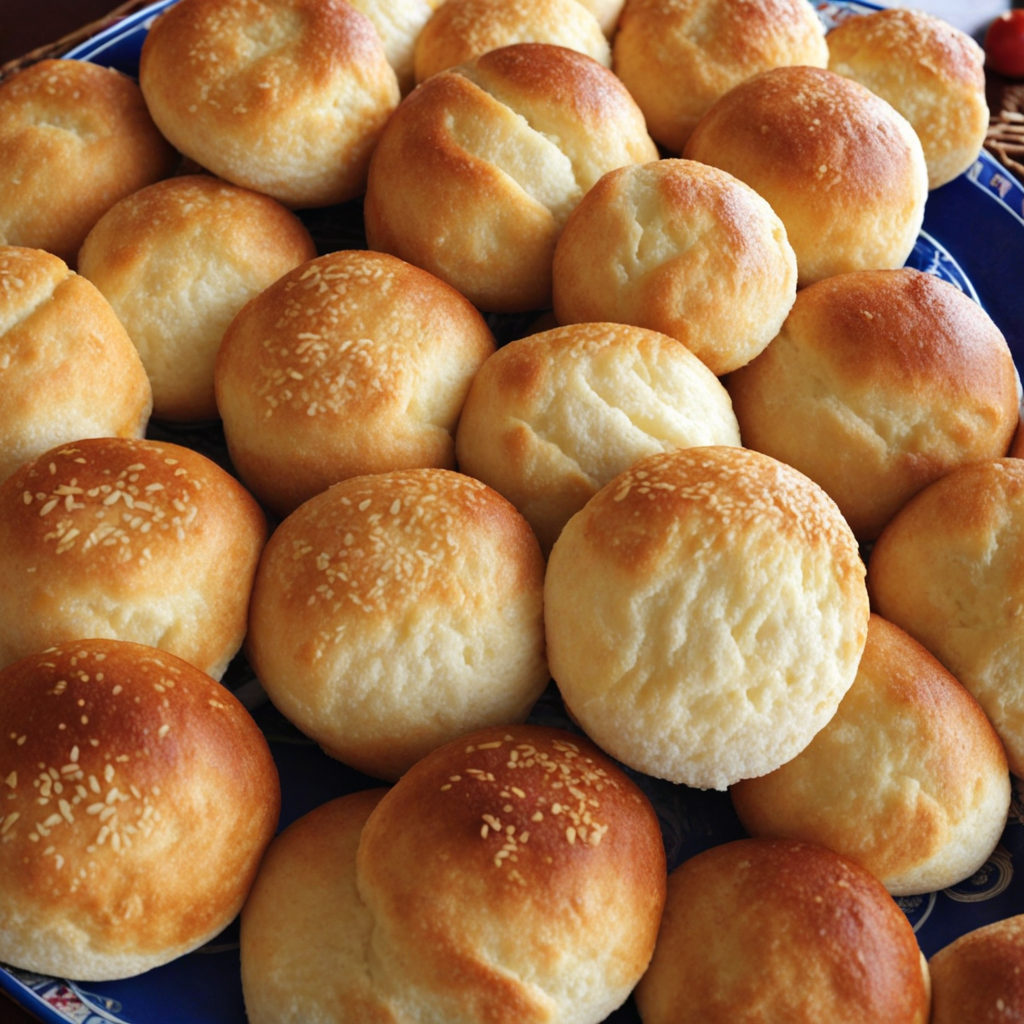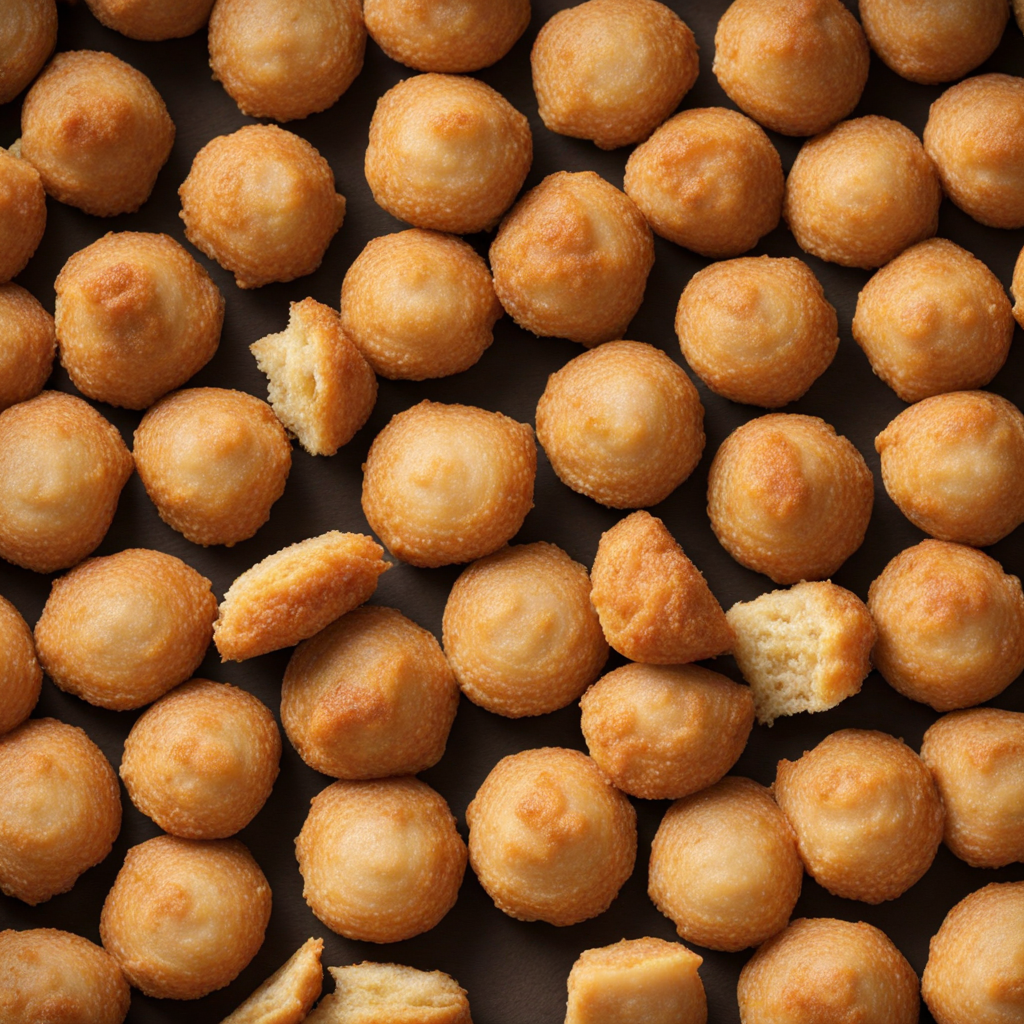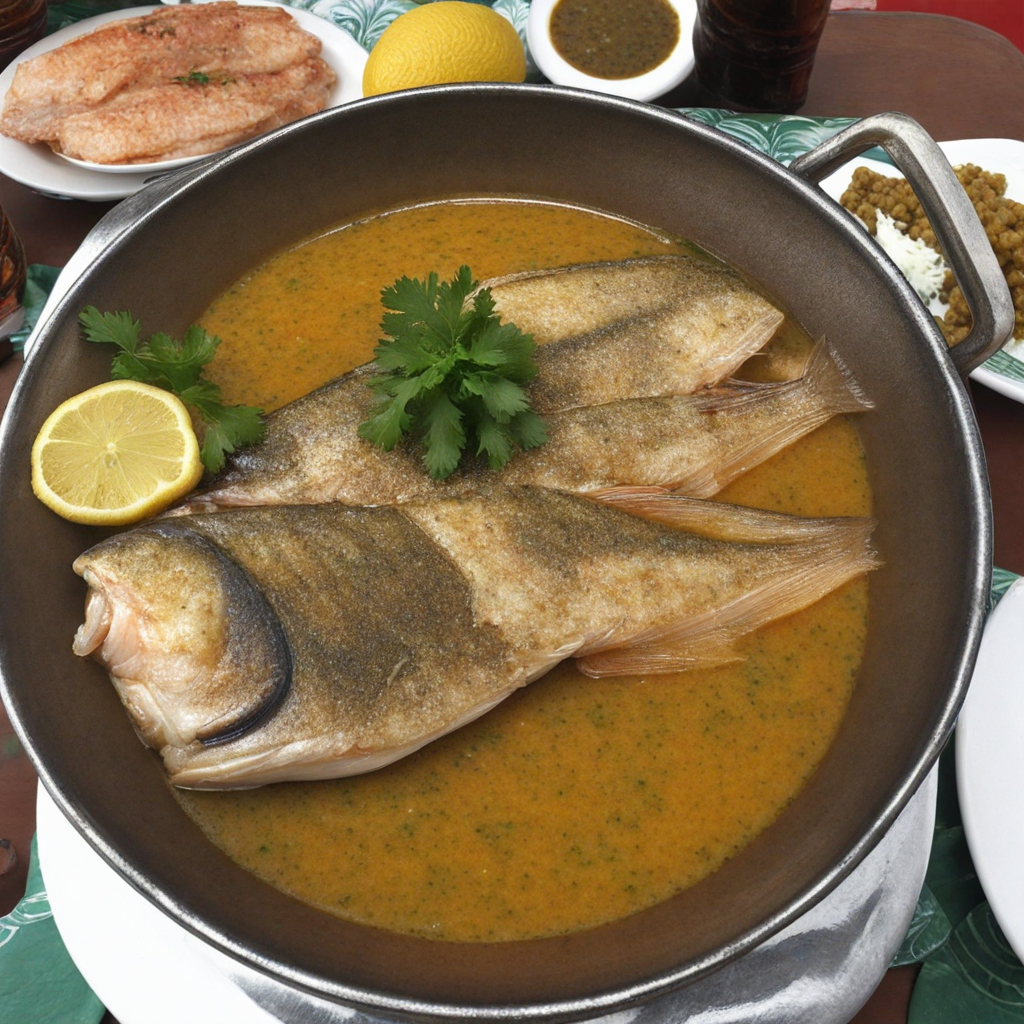Chipa Almidón
Chipa Almidón is a delightful, gluten-free cheese bread that hails from Paraguay, showcasing the rich culinary traditions of the region. This traditional snack is made primarily from cassava starch, which gives it a unique texture that is both chewy and slightly crisp on the outside. The dough is typically enriched with a generous helping of cheese, often a local variety like Paraguay cheese or even a mix of cheeses, providing a savory and rich flavor profile that is hard to resist. The combination of the nutty starch and the creamy cheese creates an irresistible taste that will awaken your palate to new sensations. The preparation of Chipa Almidón is relatively straightforward, involving the mixing of cassava starch with cheese, eggs, milk, and sometimes a hint of butter or lard to enhance the flavor. After kneading the dough into small balls or shapes, they are baked until golden brown, resulting in a warm, aromatic treat that can be enjoyed at any time of the day. The baking process leaves the insides soft and fluffy while the exterior develops a satisfying crust, making each bite a delightful experience. Often enjoyed as a snack or breakfast item, Chipa Almidón can be paired with coffee or served alongside soups and stews. Its versatility allows it to be a stand-alone treat or a complementary dish to a larger meal. As you savor each bite, you'll discover the harmonious blend of flavors and textures that define Paraguayan cuisine, making Chipa Almidón an exciting addition to your culinary adventures.
How It Became This Dish
Chipa Almidón: A Delicious Legacy from Paraguay #### Origins Chipa Almidón is a traditional Paraguayan cheese bread that holds a cherished place in the country’s culinary landscape. Its roots can be traced back to the indigenous Guaraní people, who inhabited the region long before European colonization. The Guaraní had a rich tradition of utilizing local ingredients, and their knowledge of cassava (manioc or yuca) laid the groundwork for what would eventually evolve into the beloved chipa. The term "chipa" itself is derived from the Guaraní word "tchipã," which means “to break.” This reflects the bread’s crumbly texture, characteristic of many varieties of chipa. The original recipes were simple and utilized readily available ingredients, such as cassava flour, cheese, and animal fats. However, the arrival of Spanish colonizers in the 16th century introduced new ingredients and culinary techniques, leading to a transformation in the preparation of chipa. #### Cultural Significance Chipa Almidón is more than just a snack; it is a significant part of Paraguayan culture and identity. Traditionally, it is consumed during special occasions, gatherings, and religious festivities, particularly during Holy Week and the Feast of the Virgin of Caacupé. Parisians often enjoy it with tereré (a traditional yerba mate drink) or coffee, making it a staple of social gatherings. In rural areas, the production of chipa is often a communal activity, with families and neighbors coming together to prepare large batches for celebrations or festivals. This communal aspect reinforces social bonds and allows for the passing down of recipes and techniques through generations. In fact, each family may have its own unique twist on the recipe, incorporating local variations in flavor and texture. #### Development Over Time As Paraguay evolved through the ages, so did the preparation and consumption of chipa. The introduction of European dairy practices brought new types of cheese into the mix, enhancing the flavor profile of traditional chipa. While the original recipes used locally produced cheese, the incorporation of different varieties—such as Paraguay’s famed “queso Paraguay”—has contributed to the diversity of this dish. In the 19th century, as Paraguay faced significant political and social changes, including the devastating War of the Triple Alliance, traditional food practices played a crucial role in maintaining cultural identity. The resilience of the Paraguayan people was mirrored in their culinary practices, with chipa being a symbol of their enduring heritage. It became a way to preserve their history and culture amidst turmoil. In the 20th century, the urbanization of Paraguay began to change dietary habits. As people moved to cities, traditional foods like chipa found new expressions. Bakeries specializing in chipa began to emerge, making the dish more accessible to urban populations. This commercialization led to the development of various chipa types, including chipa guasu (a cornbread variant) and chipa so'o (a meat-stuffed version), broadening its appeal. Chipa Almidón, specifically, is characterized by its unique use of starches derived from manioc, a key ingredient that distinguishes it from other types of bread. The use of manioc starch gives chipa Almidón its distinct chewy texture, which has become a defining feature of the dish. The technique of steaming or baking the dough in a wood-fired oven has also been preserved, adding to the authenticity of the flavor. #### Modern-Day Chipa Almidón Today, Chipa Almidón is widely recognized beyond Paraguay's borders, often celebrated in international food festivals and culinary showcases. The dish has become a symbol of Paraguayan gastronomy, representing the melding of indigenous and European influences. Its popularity has also encouraged chefs and home cooks to experiment with new flavors, incorporating ingredients like herbs, spices, and even modern cheeses. In contemporary times, the resurgence of interest in traditional and artisanal foods has further elevated chipa’s status. Food enthusiasts and culinary historians are keen to explore the story behind this dish, celebrating its deep roots in Paraguayan culture. The growing trend of local sourcing has also led to an increased appreciation for the ingredients used in chipa Almidón, with many bakers opting for organic and locally produced ingredients. Chipa Almidón is not just a food item; it is a vessel of storytelling. Each bite carries the history of a culture that has endured and thrived through centuries of change. The dish encapsulates the spirit of Paraguay, where tradition and innovation coexist harmoniously. #### Recipes and Variations The traditional recipe for Chipa Almidón is relatively straightforward, typically involving manioc starch, cheese, eggs, milk, and salt. The dough is shaped into small balls or patties and baked until golden brown. However, variations abound, with some incorporating additional flavors such as garlic, herbs, and even vegetables. One popular variation is the addition of anise or a touch of sugar, giving the bread a slightly sweet note that complements the savory cheese. Some modern adaptations also experiment with different cheeses, ranging from local varieties to international cheeses, which can alter the flavor profile entirely. #### Conclusion Chipa Almidón is a testament to Paraguay's rich culinary heritage, reflecting the country’s history, culture, and resilience. Its evolution from indigenous roots to a contemporary favorite showcases the adaptability of traditional foods. As Paraguay continues to grow and change, so too does its beloved chipa, standing as a delicious reminder of the past while delighting taste buds in the present. Whether enjoyed at a family gathering, a local bakery, or a high-end restaurant, Chipa Almidón remains an enduring symbol of Paraguayan identity, a dish that not only fills the stomach but also nourishes the soul.
You may like
Discover local flavors from Paraguay






